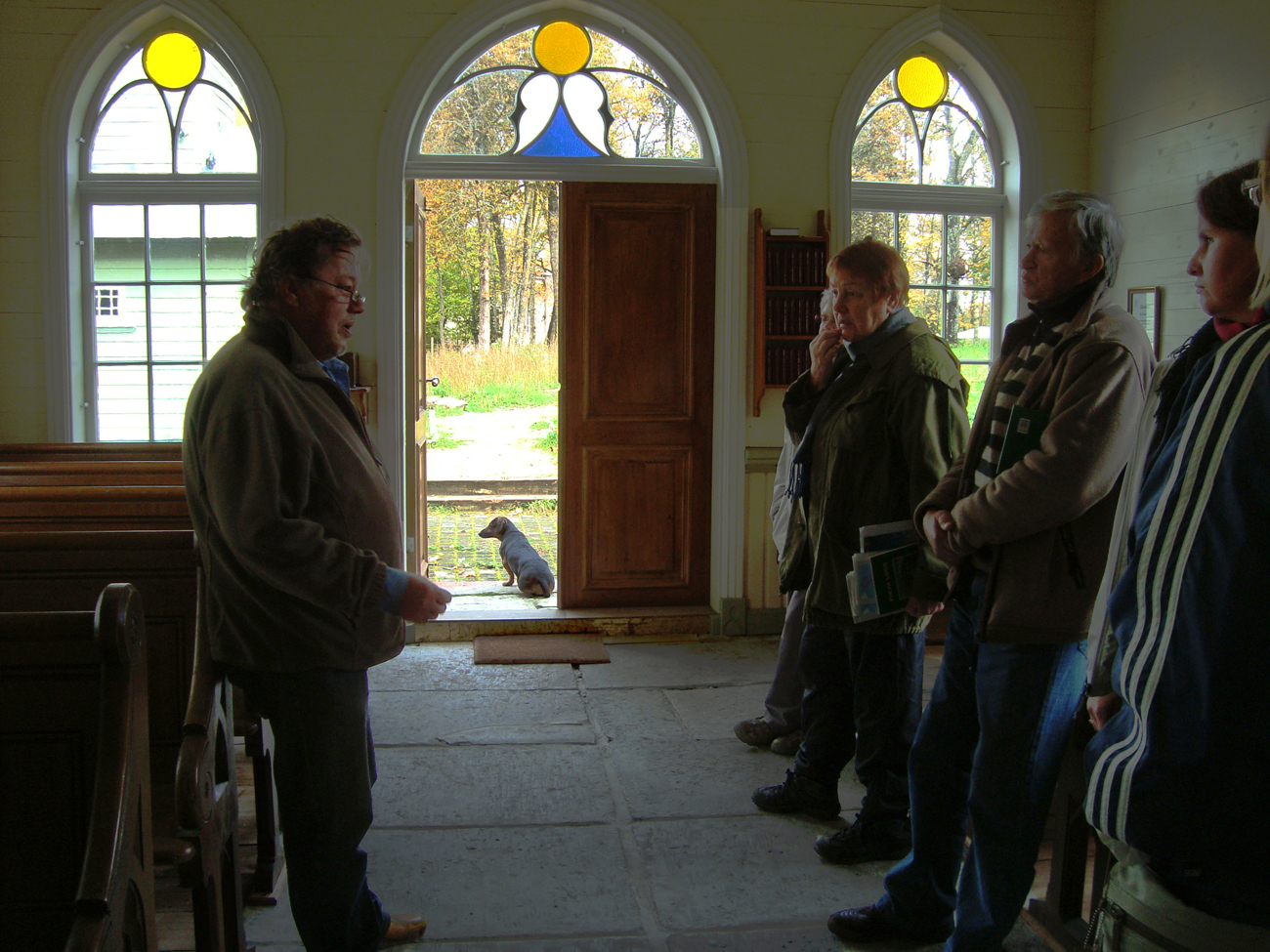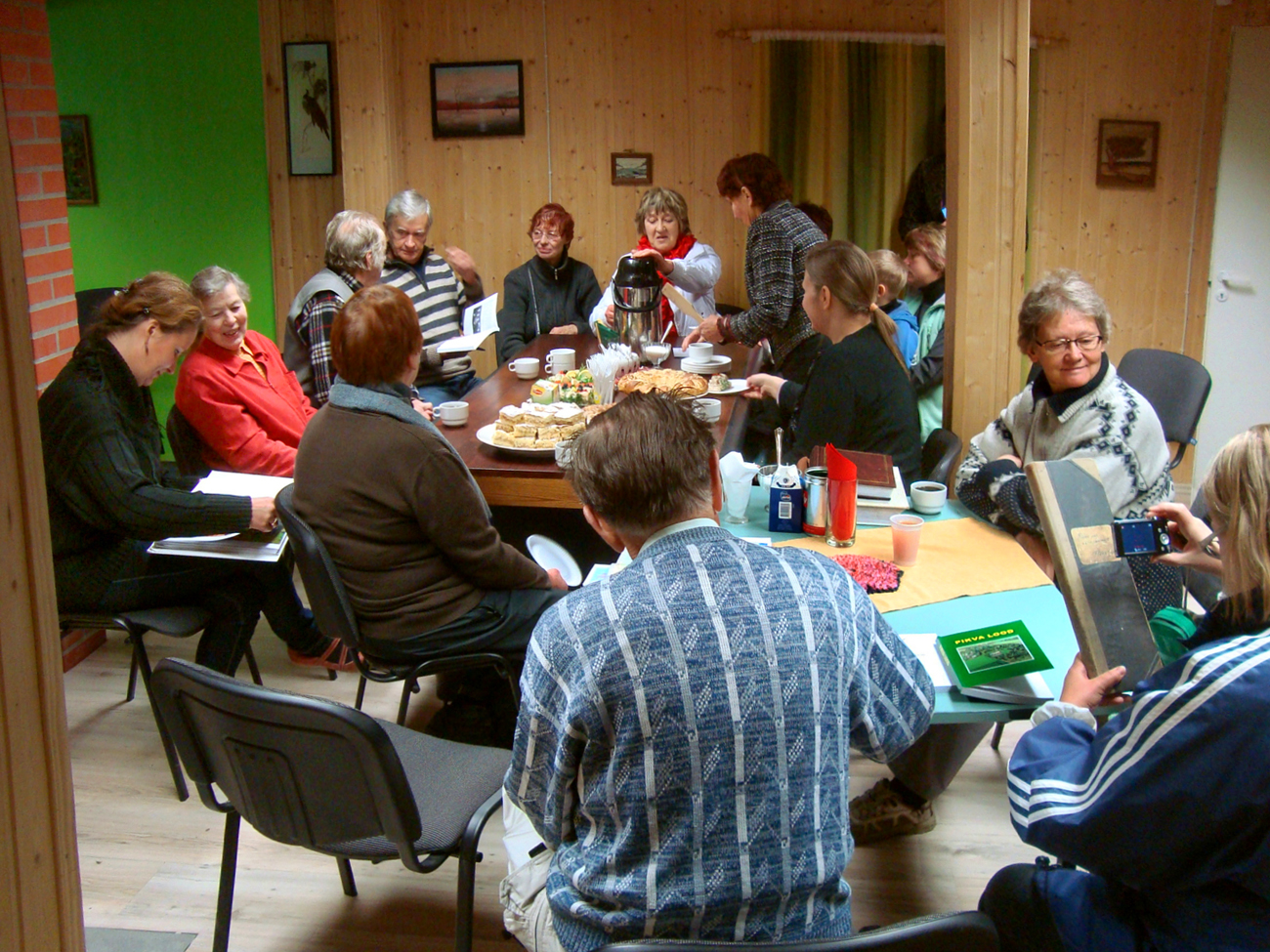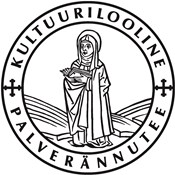Pikva and Pikaveski
PIKVA
Arriving in Pikva in Anija rural municipality, we first notice the partially dilapidated manor buildings. After a more thorough look-around we come upon – surprising-surprise! – new miniature sacral buildings: a chapel and a bell tower that stands independently nearby. Between ancient trees we get a glimpse of the mansion, currently under renovation. It belongs to Mika Orav (until 2020), who used to be the chairman of the round table of the Estonian heritage protection.
On the initiative of the same man, the details of the chapel of a former Tallinn hospital that got in the way of a new building were brought to Pikva and the chapel was restored here (the single-storey wooden neo-Gothic chapel of the Deaconesses’ House was completed in 1891, architect Erwin Bernhard.). After being relocated it is called the Pickwa St Michael’s chapel and is the only sacral building in Anija rural municipality.
The chapel was consecrated on All Souls’ Day in 2005.


The pews in the chapel date back to 1899 and constitute a gift from the Allhelgonia church on the picturesque island of Ven in Sweden. The 1851 cabinet organ is from Kolga manor, the crucifix was donated by the master builder Paul Koppel and the dean emeritus Paul Saar. The artist of the altar painting is Laurentsius (real name Lauri Sillak). The textiles in the chapel were produced by the joint effort of students and their supervisors of the Institute of Art History at the Tallinn University. Exactly how meaningful and significant each part of the textiles is, can be learned here: http://www.eestikirik.ee/?p=17684.
The chapel in Tallinn attached to the hospital once had a bell tower as well. Unfortunately, there is not a single photograph or drawing of it surviving today. The Pikva bell tower is therefore a new construction, designed by architects Illar Kannelmäe and Velli Rajangu. Building work started in 2011. The cast iron bell in the tower weighs about two hundred kilos and is probably among the last bells cast in the Franz Krull factory. The tower was consecrated on 20 May 2013.


The destination of the pilgrimage is Vana-Vastseliina, but it is sensible to choose another, closer destination first. In front of the Pikva community house we should thus cross the Kehra–Kose road and turn east along the 5-km gravel road to Pikaveski at midstream of the Jägala River. A few hundred metres later we come to the crossroads with quite new wooden signposts. As wood is not going to last forever, it is useful to know that the right road leads to Arava village and the left to Pikaveski.
It must be added that with nice weather a walker can ponder all sorts of issues here, mundane or otherwise, but a cyclist must carefully focus on holes and larger stones on the road. Approaching Pikaveski we see a settlement on the right side of the road. The summer cottage plots distributed among the workers of the Kehra Paper Mill during the Soviet era have now almost developed into a small rural town.
From a distance, nothing much catches the eye in PIKAVESKI, a place of a former mill farm. When we get closer we can admire a stone building where grain used to be dried. Together with a few other farm buildings it now belongs to Reijo-Olavi Tausch who is gradually trying to restore everything.
There is an interesting text on the bronze plate on the right bank of the river at one end of the mill dam.
The text on the plate: The building of this dam was started on 2 June 1934, in the 16th year of the Republic of Estonia when the State Elder was Konstantin Päts, and the owner of Pikaveski was JOAKIM PUHK. The dam was completed on 29 September.
The project was by engineer AUGUST WELLNER, other people involved included Theodor Toonwerk, Johann Johanson, Johannes Lemberg.
The dam needed 149,000 kilos of cement, 460 cubic metres of gravel, 796 cubic metres of stones; workers earned 20–25 cents an hour, skilled workers (masons, carpenters) earned 35–40 cents an hour; approximately 30 people worked there every day. At that time a gram of cold cost three crowns 98 cents; one kilo of rye cost 11 cents; one kilo of salt 6 cents; one kilo of butter 1 crown 10 cents. One kilo of cement cost 4.8 cents.
Chisel marks on a securing bolt indicate that someone tried to remove the plate already during the Soviet period, but luckily without success. We can thus still read the text, which tells about the building of the dam and life in general at that time. The owner back then was Joakim Puhk, who was actively promoting pre-war Estonian economy, politics and sport.
Ago Papp


Accommodation in Pikva community house
There are mattresses for 10 pilgrims and cooking facilities.
Price per traveller 5 €. Contact: Laura 533 04 015, pikvaarava@gmail.com
